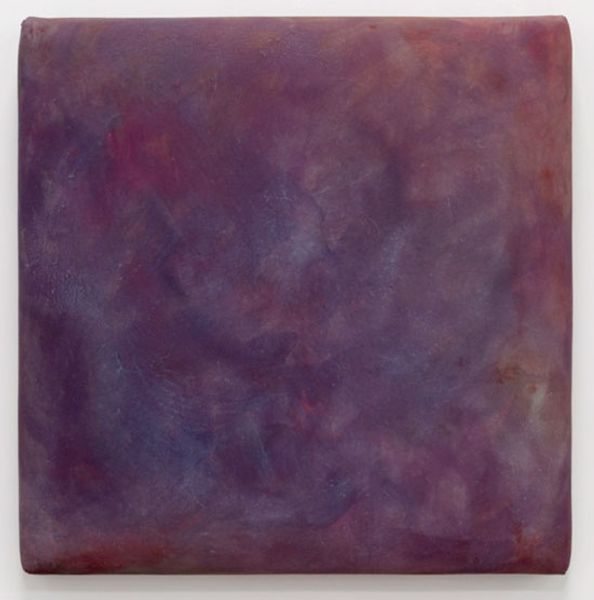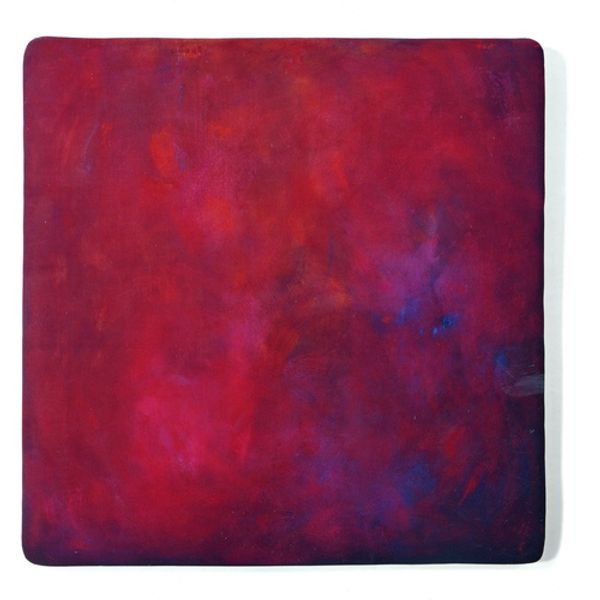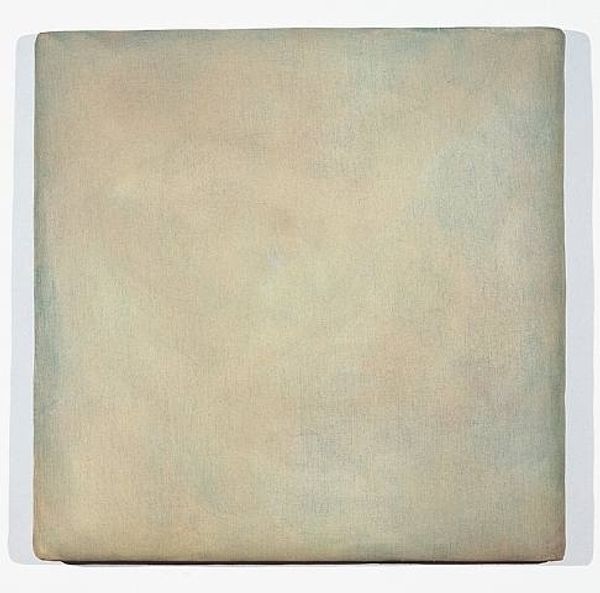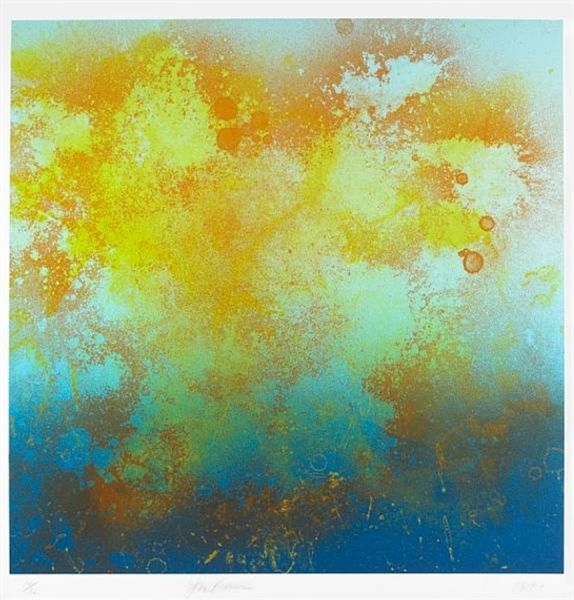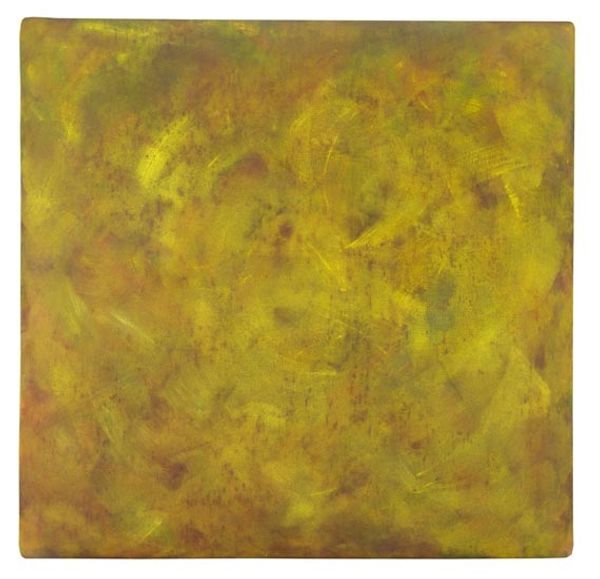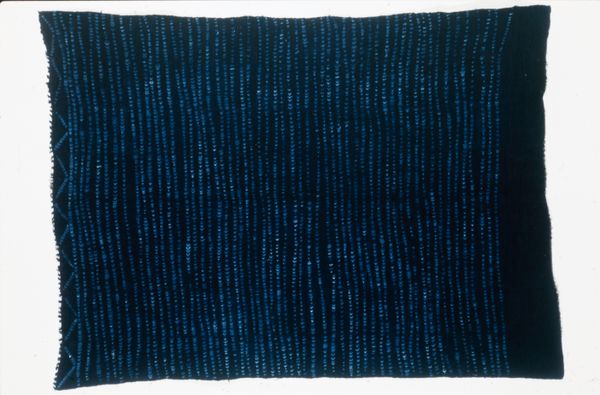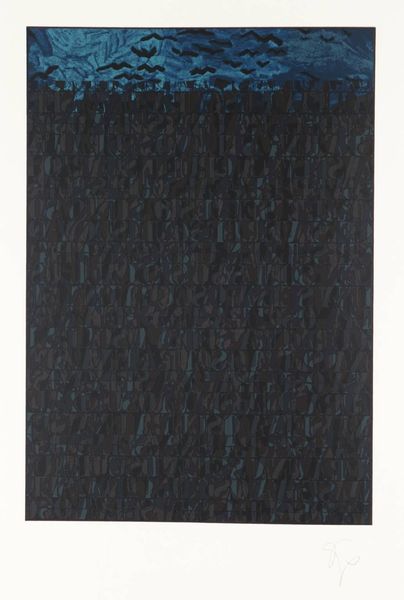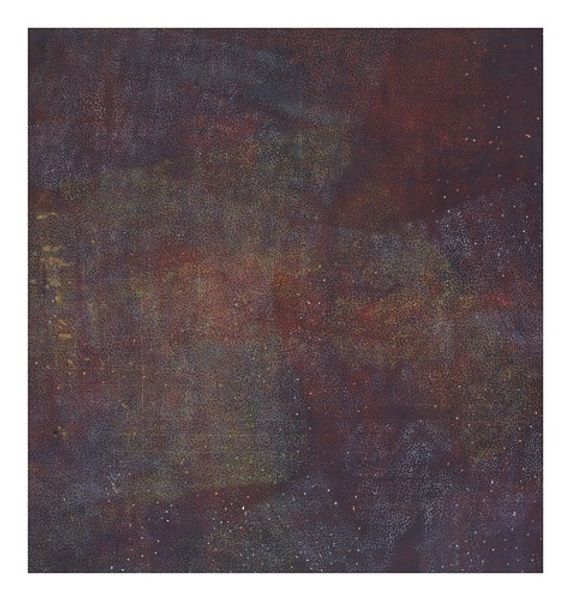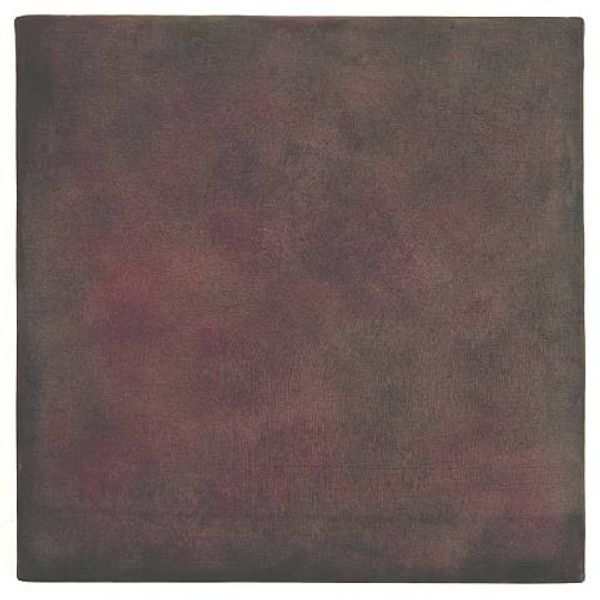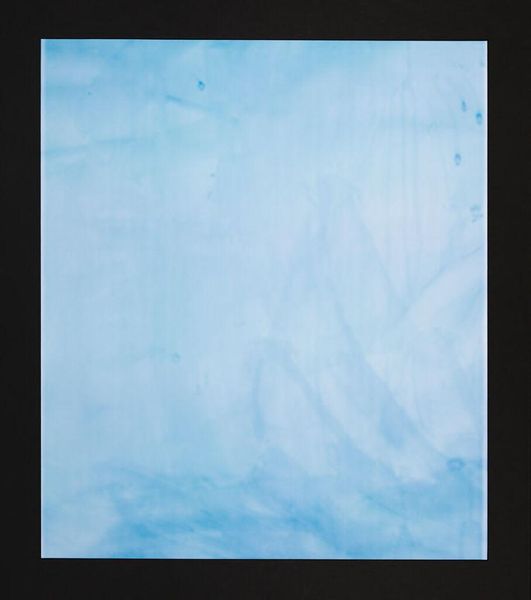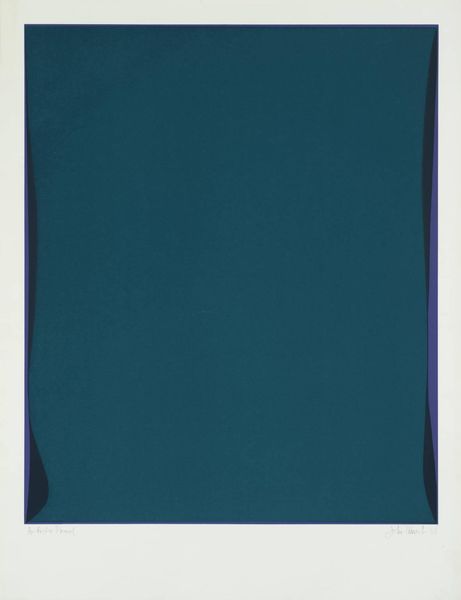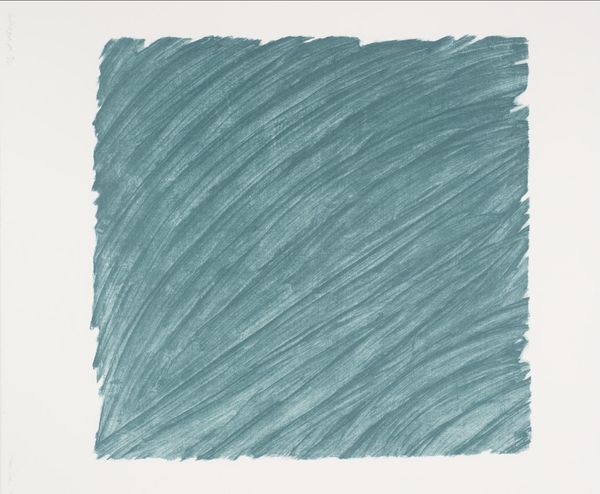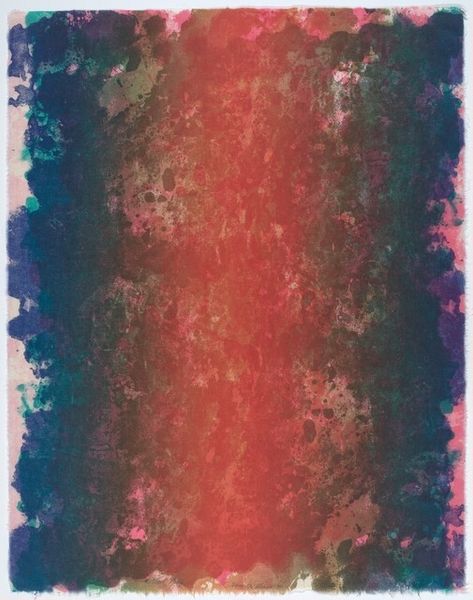
Copyright: Gotthard Graubner,Fair Use
Curator: This "Untitled" piece is by Gotthard Graubner, created in 1988. He worked with watercolor and gouache. Editor: Immediately, the dense layering of blues evokes a sense of vastness, almost like peering into the depths of the ocean or a boundless night sky. The hues intermingle, producing soft contrasts that keep drawing my eyes in. Curator: Graubner's practice during this period centered on exploring color as a self-sufficient subject, rejecting formal structure for pure chromatic expression. Think of color-field painting meeting Art Informel—an embrace of spontaneity and gesture. Editor: And the blurring of lines is deliberate. Does that suggest a freedom, even a kind of resistance to definition during the late 1980s as global tensions heightened? How might the cultural climate be at play here? Curator: Possibly. He certainly saw color as having the capacity to evoke profound emotional and even spiritual experiences beyond conventional representation. It is as if he was trying to uncouple art from any socio-political reading. He thought of color in transcendental terms. Editor: But I'm not sure he managed that! A saturated blue rectangle like this is unavoidably loaded, even if unconsciously. The color blue itself often symbolizes melancholy or stability, and it's been employed to evoke the divine, but at times to establish state control or claim colonial power too. It also connects with social alienation and feelings of anxiety that become increasingly present during that decade. It is unavoidable not to draw this links. Curator: That's a valid perspective. Still, if we look at it within the history of post-war German art, Graubner's abstraction represented a move away from figuration, in defiance of previous political ideologies and propaganda uses of images. His pursuit of pure color aimed to restore a sense of optimism, perhaps? Editor: Maybe so. However, this reading makes me question how optimism can co-exist with a monochrome hue dominated by blue in its darkest tones? Doesn't that potentially mask other realities? I wonder, at what point do aesthetic choices intersect, perhaps inadvertently, with power dynamics of the period? Curator: Food for thought indeed. It shows us that abstract art can offer many insights when viewed with different approaches. Editor: Agreed. The beauty of art is always in those conversations.
Comments
No comments
Be the first to comment and join the conversation on the ultimate creative platform.
